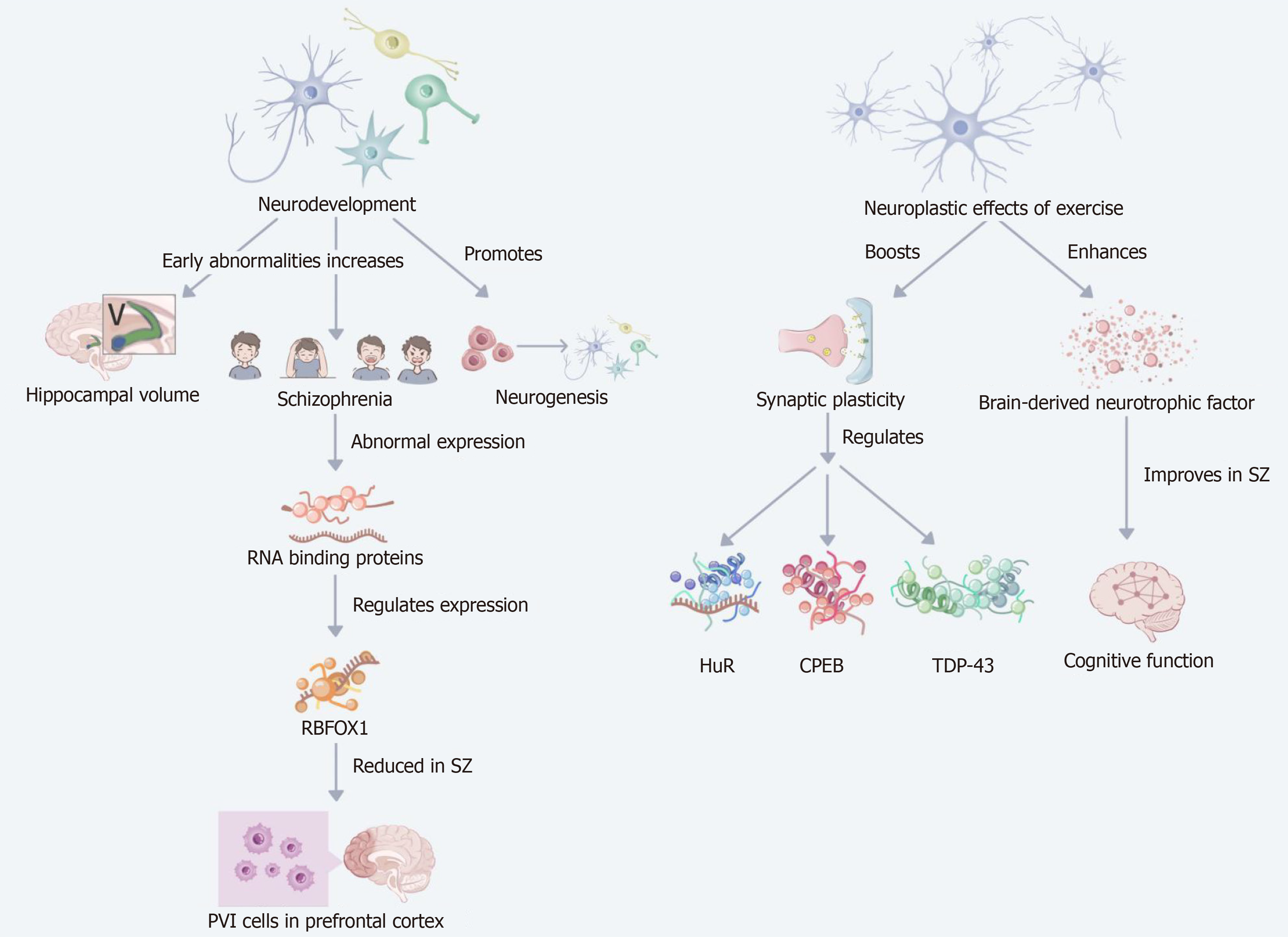Copyright
©The Author(s) 2025.
World J Psychiatry. Sep 19, 2025; 15(9): 107498
Published online Sep 19, 2025. doi: 10.5498/wjp.v15.i9.107498
Published online Sep 19, 2025. doi: 10.5498/wjp.v15.i9.107498
Figure 5 Regulatory mechanisms of RNA binding proteins associated with schizophrenia through exercise.
This figure demonstrates the mechanism of regulation of the expression of RNA binding proteins (RBPs) associated with schizophrenia through exercise. The figure first appears the association between schizophrenia and aberrant expression of RBPs, specifically RNA binding fox-1 homolog expression is decreased in prefrontal cortex PVI cells from schizophrenia patients. Exercise regulates the expression of several RBPs (e.g., human antigen R, cytoplasmic polyadenylation element-binding protein, and TAR DNA-binding protein 43) by enhancing synaptic plasticity and neuroplasticity, thereby restoring normal synaptic transmission function to some extent. In addition, exercise positively alters neurodevelopment by increasing the health of brain structures (e.g., promoting neurogenesis and hippocampal volume increase) and increasing brain-derived neurotrophic factor levels, thereby improving cognitive function and emotional stability in SZ patients. SZ: Schizophrenia; HuR: Human antigen R; CPEB: Cytoplasmic polyadenylation element-binding protein; TDP-43: TAR DNa-binding protein 43; RBFOX1: RNA binding fox-1 homolog.
- Citation: Lu Y, Kong JD, Zhao LN. Role of RNA-binding proteins in exercise-induced mRNA regulation: Unveiling biomarkers and therapeutic targets for schizophrenia. World J Psychiatry 2025; 15(9): 107498
- URL: https://www.wjgnet.com/2220-3206/full/v15/i9/107498.htm
- DOI: https://dx.doi.org/10.5498/wjp.v15.i9.107498









